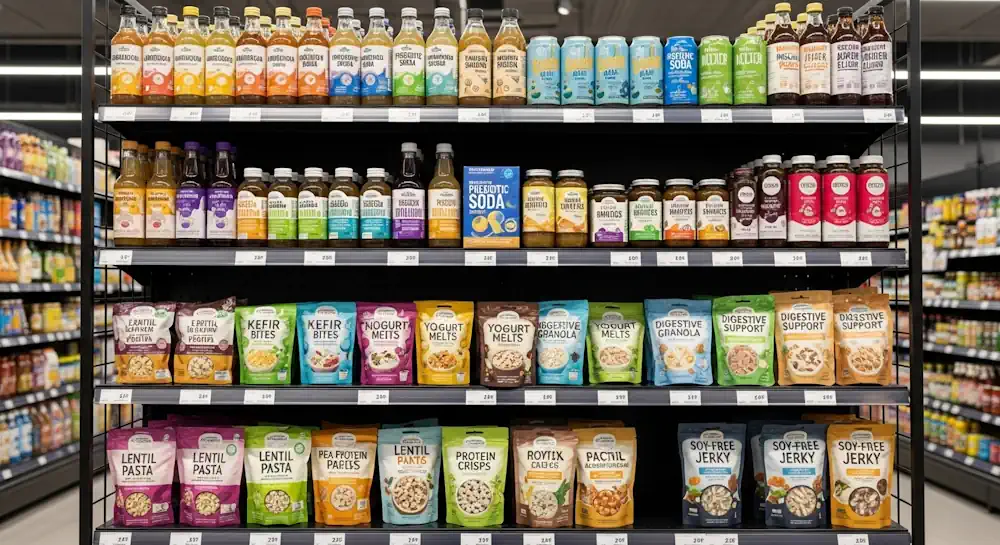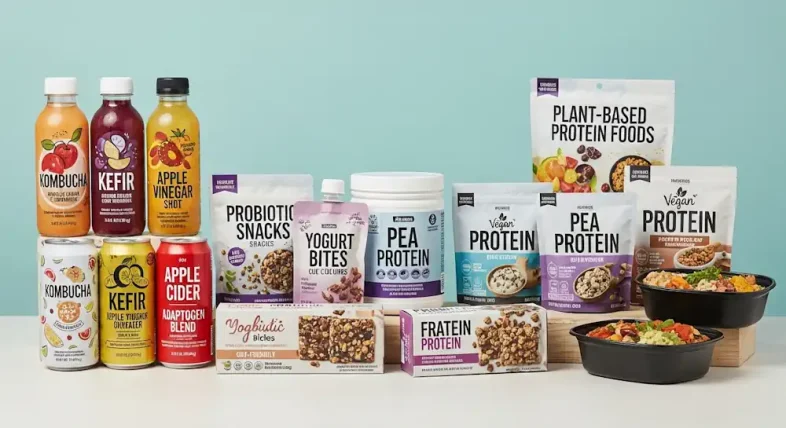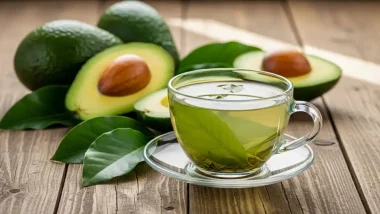The “food as medicine” movement is shifting from niche health circles into boardrooms, research labs, and regulatory debates. In the past decade, food and beverage companies have begun to reframe their products not just as sources of calories, but as tools for managing wellness, mood, and metabolic health. This repositioning carries both opportunity and risk – success will depend on credible science, transparent claims, and integration with evolving health systems.
Market Scale and Growth Trajectories
Functional foods – broadly, foods designed or fortified to deliver additional health benefits beyond basic nutrition – are driving a major growth wave across the food sector. Multiple market trackers estimate a large and rising category, with projections that the global functional foods market could approach the high-$500 billions by 2030. Within that umbrella, the functional ingredients market – the components used to fortify foods – is also expanding as brands reformulate to add prebiotics, probiotics, fiber, and bioactives.
Regionally, North America holds a substantial share, while emerging markets in Asia and Latin America are accelerating. Country-level outlooks show similar patterns as retailers, e-commerce channels, and convenience formats make functional products more accessible.
Product Trends: What is Selling Now
- Active living and energy support: Shoppers increasingly expect foods to support vitality, focus, or recovery. Energy, hydration, and performance cues are prominent across snacks and drinks.
- Functional hydration and beverages: Functional sodas, prebiotic colas, botanical seltzers, and fortified coffees are hotly competitive as consumers seek flavorful wellness cues without clinical packaging.
- Mood, cognition, and stress: Adaptogens, magnesium, and select nootropics are appearing in teas, shots, bars, and waters positioned for calm or focus.
- Gut health and microbiome support: Prebiotics, probiotics, and polyphenols remain central, with grocers expanding fiber-rich bars, synbiotic drinks, and digestive-friendly staples.
- Botanicals and novel extracts: Functional mushrooms and botanicals are gaining shelf space, though oversight and quality standards vary by market.
- Delivery tech: Microencapsulation and other technologies are being explored to stabilize sensitive ingredients and improve bioavailability.
Consumers: Demand and Adoption Barriers
Interest is strong, but acceptance is not uniform. Studies indicate that demographics, product knowledge, trust in claims, and price sensitivity help explain who adopts functional foods early and who hesitates. Common barriers include skepticism about exaggerated benefits, taste or texture trade-offs, price premiums, and confusion about what phrases like “clinically tested” or “supports” actually mean. Brands that pair credible ingredient stories with enjoyable formats and clear guardrails around what a product can – and cannot – do tend to perform better.

Integration with Health Systems
One ambitious frontier is embedding food-based interventions into health and public systems. In the United States, state Medicaid pilots for medically tailored meals, produce prescriptions, and medically tailored groceries are testing nutrition support for people with diet-related diseases or food insecurity. Early programs link meals and counseling to clinician referrals and include cultural tailoring and nutrition standards. Promising pilot outcomes include improvements in biometric measures and reduced food insecurity, though questions remain about scalability, measurement frameworks, and long-term cost-effectiveness.
Regulatory, Safety, and Credibility Hurdles
With growth comes scrutiny. In the U.S., companies must distinguish between structure-function statements, nutrient content claims, and health claims – and ensure substantiation. The evolving definition of “healthy” and interest in front-of-pack labeling signal a tighter claims environment. In the European Union, Regulation (EC) No 1924/2006 establishes strict requirements for nutrition and health claims, emphasizing scientific backing and clear consumer communication.
Two additional challenges loom. First, when functional foods lean on botanical extracts, regulatory categorizations can blur, and consistency of bioactive levels becomes technically difficult. Second, consumer misunderstanding of medicinal-sounding marketing can backfire if products are perceived as substitutes for medical care rather than complements to healthy patterns.
Outlook: What Winners Will Look Like
- Clinical evidence and validation: Brands that invest in human studies and publish results will gain trust.
- Healthcare integration: Partnerships with providers, payers, and referral networks can unlock scale and reimbursement pathways.
- Transparent labeling and education: Plain-language benefits and realistic expectations help sustain trust.
- Access and affordability: Prices and distribution models that reach cost-sensitive shoppers will determine mainstream penetration.
- Products plus services: Pairing foods with tele-nutrition, personalized guidance, or data-driven programs can create defensible value.
In short, the category is entering a maturation phase. What began as a marketing edge is becoming table stakes. As standards tighten and shelves crowd, advantage will accrue to companies that back claims with credible science, build bridges into care delivery, and deliver real, measurable value to consumers.


